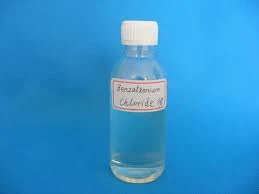dry polyacrylamide
Understanding Dry Polyacrylamide Properties, Applications, and Benefits
Dry polyacrylamide (PAM) is a versatile polymer that has gained significant attention in various industrial applications due to its unique chemical properties and capabilities. As an acrylamide-based material, dry PAM stands out for its ability to absorb water and form gels, making it particularly useful in fields such as water treatment, agriculture, and soil conditioning.
Properties of Dry Polyacrylamide
Dry polyacrylamide is a white, crystalline powder that can be classified into different types depending on its formulation. It can be anionic, cationic, or nonionic, which indicates the charge of the polymer in solution and affects its behavior in various applications. Anionic PAM is commonly used in water treatment processes, while cationic PAM is beneficial in flocculation, sedimentation, and dewatering operations.
One of the most remarkable features of dry PAM is its high molecular weight, which enhances its ability to form networks in aqueous solutions. This capability allows it to improve viscosity, stabilize suspensions, and increase the effectiveness of solid-liquid separation processes.
Applications in Water Treatment
One of the primary applications of dry polyacrylamide is in water treatment. When added to water, PAM acts as a flocculant, helping to aggregate suspended particles, thereby facilitating their removal. This process is crucial for treating wastewater in municipal and industrial settings, ensuring that effluents meet regulatory standards before being released back into the environment.
Dry PAM’s ability to enhance sedimentation rates makes it invaluable in clarifying drinking water, reducing turbidity, and improving overall water quality. Its use in sludge dewatering also helps minimize the volume of waste generated, thereby reducing disposal costs and environmental impact.
Agricultural Benefits
dry polyacrylamide

In agriculture, dry polyacrylamide is increasingly utilized for soil conditioning and management
. When mixed with soil, PAM can improve water retention, reduce erosion, and enhance the soil structure. This is particularly beneficial in arid and semi-arid regions, where water scarcity poses significant challenges to crop production.The application of dry PAM enhances the efficacy of irrigation systems by allowing water to penetrate deeper into the soil and reach plant roots more effectively. This can lead to improved crop yields and reduced water usage, contributing to more sustainable agricultural practices.
Environmental Considerations
The use of dry polyacrylamide in both water treatment and agriculture aligns with current trends toward sustainable practices. With an increasing focus on environmental conservation, PAM presents a solution that not only improves efficiency but also minimizes ecological footprints.
Furthermore, PAM is generally considered safe for use, especially when it is properly formulated and managed. Studies have shown that when used in appropriate concentrations, dry polyacrylamide poses minimal risks to human health and the environment. However, it is essential to adhere to regulatory guidelines and best practices to ensure safe usage.
Conclusion
In conclusion, dry polyacrylamide is a powerful tool in various industries, particularly in water treatment and agriculture. Its unique properties facilitate numerous applications that promote efficiency, sustainability, and environmental stewardship. As research continues to unveil new methods of utilizing this polymer, it is likely that dry polyacrylamide will play an increasingly significant role in addressing contemporary challenges related to water management and agricultural productivity. With ongoing advancements in polymer technology, dry PAM’s potential is set to be further realized, offering solutions that benefit both industry and the environment.
Overall, the importance of dry polyacrylamide cannot be overstated. As industries strive to develop more environmentally responsible practices, the role of PAM in enhancing operational efficiency and promoting sustainable approaches will continue to be invaluable. The future of dry polyacrylamide is bright, with the potential for innovation and new applications set to emerge in the years to come.
-
Water Treatment with Flocculant Water TreatmentNewsJun.12,2025
-
Polymaleic AnhydrideNewsJun.12,2025
-
Polyaspartic AcidNewsJun.12,2025
-
Enhance Industrial Processes with IsothiazolinonesNewsJun.12,2025
-
Enhance Industrial Processes with PBTCA SolutionsNewsJun.12,2025
-
Dodecyldimethylbenzylammonium Chloride SolutionsNewsJun.12,2025





